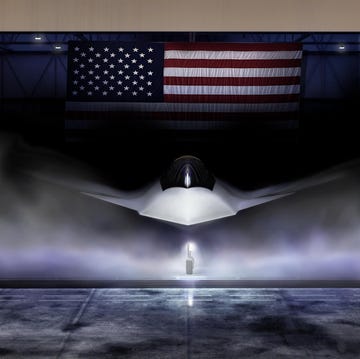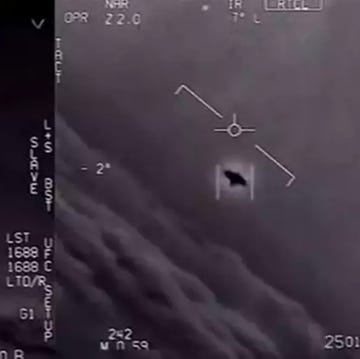Hypersonic missiles are capable of traveling more than 3,800 miles per hour and striking targets over 1,700 miles away. While America has yet to deploy a hypersonic missile system amid multiple delays, its adversaries, particularly China and Russia, have already raced ahead. Their weapons may have nuclear payload capabilities that can cross oceans, worrying some American officials about the status of comparable U.S. weapons for defense and deterrence.
Now, the U.S. Army finally seems close to deploying its first hypersonic missile system. Officially known as the Long-Range Hypersonic Weapon, the system better known as “Dark Eagle” represents a leap in missile technology. However, the project deadline has continued creeping farther past its 2023 deadline since the Army initiated its accelerated delivery six years ago. Amidst recent news that the missile is technically flightworthy, a question remains: are these potentially expensive delays simply a sign of continued testing or a symptom of doubts and speculation in the military community about the ultimate purpose of such a missile? Does the system’s very potential—a high level of destruction—cause too much concern for it to be rolled out in battle yet?
This past January, the U.S. Department of Defense (DoD) revealed in its annual Operational Test & Evaluation report that “the operational effectiveness, lethality, suitability, and survivability” of the hypersonic missile was still unknown due to “insufficient data.” Despite a successful end-to-end flight test in December 2024, Dark Eagle is still not officially ready to enter the field. “We continue to move down the path we were on,” said Lt. Gen. Robert Rasch, director of the Army’s Rapid Capabilities and Critical Technologies Office, during the AUSA Global Force conference in March 2025. “But as far as decisions on when we field, when [initial operational capability] will be, etcetera, those have to be vetted.”
In other words, the missile may be ready—but politically, operationally, and philosophically, the United States isn’t prepared to use it in active combat.
Dark Eagle is built on the Navy’s Common Hypersonic Glide Body, which is slated for launch from Zumwalt-class destroyers. The Army’s system is ground-based, using truck-mounted launchers to deploy the glide vehicle after a two-stage booster propels it skyward. While the Navy led the development of the glide body, Lockheed Martin and Northrop Grumman developed the rocket booster.
Once released, the glide body travels at hypersonic speeds—over five times the speed of sound—and maneuvers in flight, making it nearly impossible to intercept.
But after hurtles that included a significant launcher engineering issue, the weapon remains in limbo. Despite soldiers from the 5th Battalion, 3rd Field Artillery Regiment receiving components and training several years ago, they’re still awaiting final deployment orders.
A recent development in the military budget may indicate a change in posture about the readiness of this system and the United States’ willingness to deploy it: According to the 2024 DoD budget, each missile’s procurement cost was about $41 million. That budget allocated nearly $1 billion for Dark Eagle research and development. However, a year later, the budget pivoted toward acquisition, dropping much of its R&D funding. It specified a whopping $744 million to buy Dark Eagle missiles—a nearly five-fold increase from the previous year for acquisitions. Notably, the Army now plans to purchase some 300 Dark Eagle missiles, a decision which may be underscoring a sense of urgency in acquiring these weapons.
The United States has long relied on its geographic isolation—buffered by two oceans and bordered by friendly nations—to protect the mainland from direct attack. In that context, long-range hypersonic weapons aren’t merely a show of strength, but a strategic necessity. The U.S. needs the ability to strike hardened targets deep inside adversarial territory from launchpads within its own borders.
But that same isolation makes America uniquely vulnerable to hypersonic retaliation. A Russian or Chinese missile, launched from thousands of miles away, could reach U.S. soil in minutes, with little to no early warning. The defensive systems we have now, which are designed largely for ballistic trajectories, may not be enough. Traditional missiles ultimately fall to Earth in a predictable, parabolic arc due to gravity, but hypersonic missiles can maneuver unpredictably.
Senator Angus King made this point on March 26, 2025 during the Senate Armed Services Subcommittee on Strategic Forces meeting where he said, “I just want to emphasize not only do we need a hypersonic weapon for deterrent possibilities, but we need hypersonic defense.”
The DoD has reported that Dark Eagle is designed solely for non-nuclear use. However, Russia and China have made no such claims.
Russia’s Kh-47M2 Kinzhal, aka “dagger,” is an air-launched hypersonic missile that has already been launched against Ukraine. Capable of carrying either nuclear or conventional payloads, the Kinzhal is fast and difficult to intercept. Its deployment sent a message that Russia is not afraid to show off its most advanced capabilities.
China, meanwhile, is investing in hypersonic glide systems potentially capable of fractional orbital bombardment, which means they can launch into low-Earth orbit before gliding to Earth from any direction—and without alerting early warning radar systems. These systems, too, may be nuclear-capable, but so far the U.S. doesn’t know.
In contrast, the U.S. has been almost defensive about Dark Eagle—testing, refining, delaying. This caution may reflect political norms, an adherence to transparency, or perhaps a desire to keep adversaries guessing. But the delay also raises concerns. If Russia is already using hypersonic missiles, and if China is fielding them in secret, why is the U.S.—with its unparalleled defense budget—still lagging behind?
The uncomfortable truth is that hypersonic missiles exist to penetrate defenses and deliver a decisive blow—potentially nuclear—across great distances. These aren’t weapons meant solely for proxy wars or gray zone conflicts. Perhaps the Russian use of their “daggers” in Ukraine is intended to send an international message about their willingness—and readiness—to deploy aggressive militant operations beyond the confines of their neighbors.
In a world where adversaries are moving faster and more brazenly, the clock is ticking on American deployment of Dark Eagle. Because hypersonic missiles are no longer speculative—they’re a dangerous new reality.
Matthew Berman holds a B.A. in Philosophy from Temple University. Originally from Philadelphia, Matthew specializes in analyzing global events through the lens of ethics, world religions, and linguistic rhetoric. His academic studies give him a deep understanding of how human ideologies shape practical matters like national defense, political strategy, and public discourse. By drawing on connections between diverse philosophical traditions and contemporary issues, he is able to provide fresh insights into the intersection of technology, geopolitics, and societal impact. His work reflects a commitment to exploring complex issues with clarity and depth, making them accessible and relevant to a broad audience. More about Matt Berman at https://www.mattske.com/













